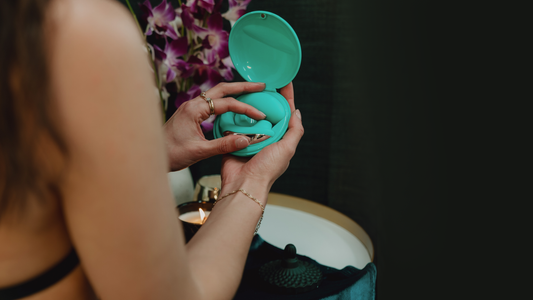In many parts of the world, the cultural messaging around sex and our bodies is negative, shaming, guilt-inducing, silencing.
How can you learn to talk about something that you’ve learned to be silent on your whole life? How do you know that what you’re experiencing is normal if you can never ask the person next to you? If I wanted to know about what people do in a kitchen, I’d ask: ‘Where do you get your ingredients from?’ ‘How do you cook sausages?’
For many men and women, their genital appearance is a source of anxiety, and a part of that is being able to be open about it.
When we shame or judge ourselves, or if we’re shamed and judged by someone else, the brain goes into a fight-or-flight response. It releases a cascade of norepinephrine and cortisol, which shuts down the learning centers of the brain and shuttles all our resources to survival pathways.
So, shame robs us of the resources and the energy we need to do the work of productive change. And shame, especially in men, forces you into an emotional armor. You lose touch with your authentic self and become lost from others. Shame is very isolating.
At various points in history, anatomists and surgeons, pathologised parts of women's genitals such as the clitoris or labia minora and associated genital morphology with certain medical conditions like lesbianism and hermaphroditism. Differences in the length of women's labia have been of particular concern to people over the centuries. In 1810 Sarah Bartman met a man named Alexander Dunlop who convinced her to come back with him to London to be part of a traveling "freak show" due to her large buttocks.

English men and women paid to see Baartman's body, and for an extra fee, they could touch it to prove its authenticity. We now know that she had what was called "steatopygia", resulting in extremely protuberant buttocks due to a build-up of fat. When Baartman died at age 26, the naturalist Georges Cuvier made a plaster cast of her body before dissecting it. He preserved her skeleton and pickled her brain and genitals, placing them in jars displayed at Paris's Museum of Man. They remained on public display until 1974.
Vulvas and labia are as different as faces but many people, particularly women, don't seem to know that. With the huge rise in recent years of cosmetic labial surgeries, this worrying trend to create the "perfect" vagina is essentially consensual genital mutilation and sets a worrying precedent for future generations of women.
We aren't saying that individual surgeries don't help women with their self-esteem, but they may simultaneously create a situation that is worse for women overall, one in which there's yet another norm to live up to.

“The vagina became this whole new place to shame women around, because there’s money to be made in shaming people. There’s a whole industry base set up to persuade women they’re defective.” (Jamie McCartney).
Jamie McCartney is a UK artist, most famous for his Great Wall of Vagina piece. An earlier piece called The Spice of Life was commissioned in 2006 and he took 36 castings of men and women, which was when he became aware of how anxious many women are about their genital appearance. He partly blames this on the rise of cosmetic procedures that dictate how a women should look - not just in terms of her face or her figure, but even in her most intimate areas, which he refers to as "body fascism".
"It's not vulgar, it's vulva."
“Having only had pornography as a reference before, the result was like getting a weight off my shoulders,” McCartney says.
Research has shown that both men and women tend to be under-exposed to genital variation. Women don't tend to look at other women's genitals. People who have less exposure to other genitals are more likely to fear that their own genitals are abnormal and feel uncomfortable in themselves.
Surgeons have said that women bring in pictures from soft pornography magazines as representative of the aesthetic that they are looking for. Vulvas in soft core pornography like Playboy (when Playboy still featured nudes, that is) were often photoshopped to make them look less 'obscene'. And the result is that women want vulvas that were never real in the first place.




